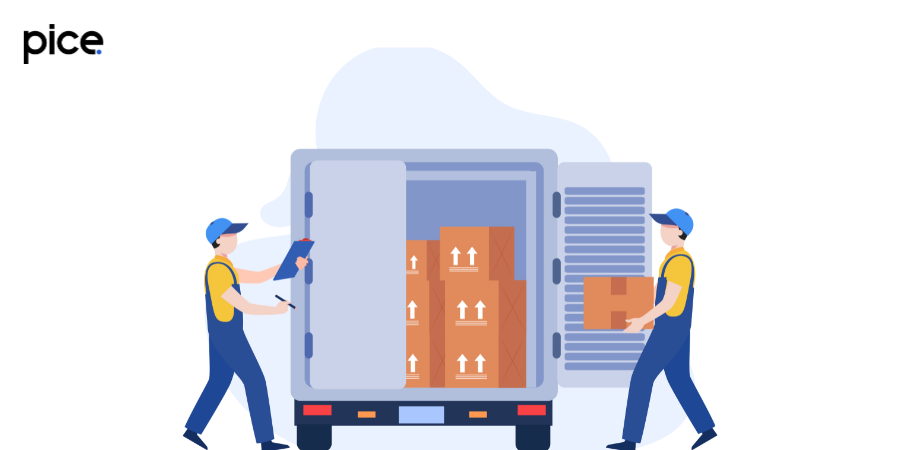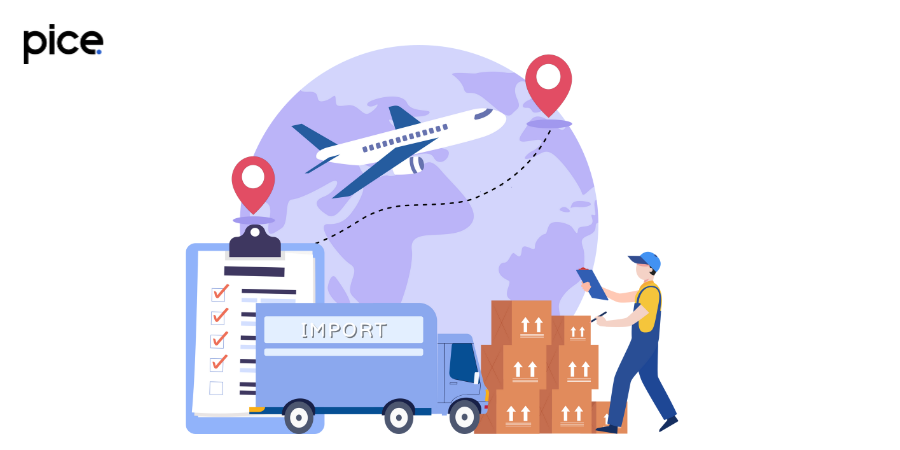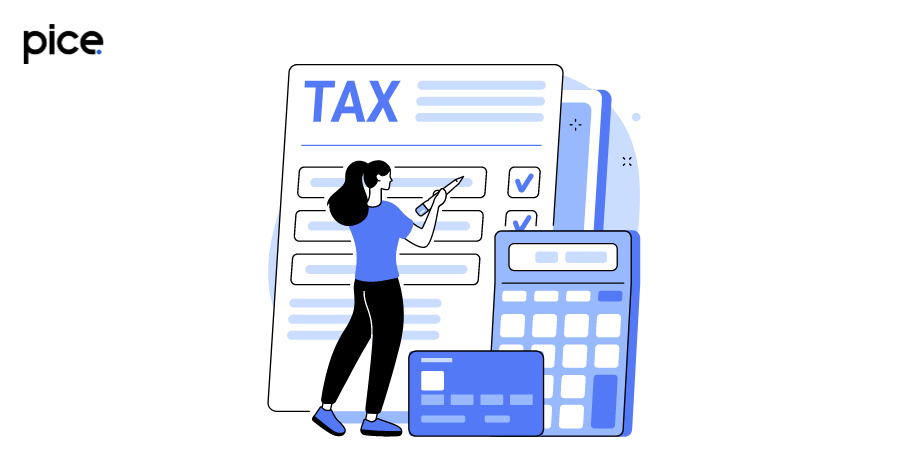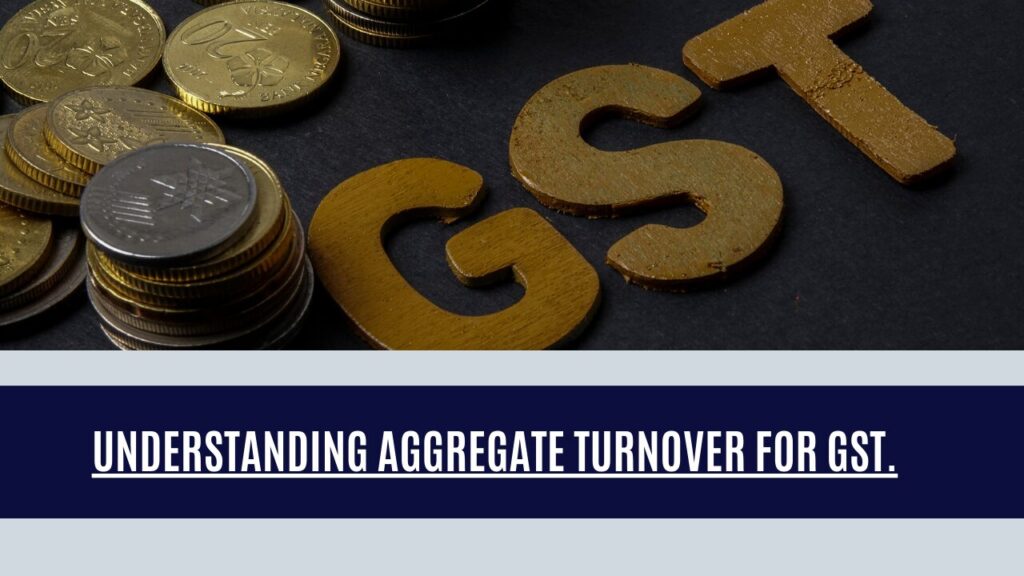Key Takeaways
- Goods Transport Agencies (GTAs) must navigate specific GST compliance requirements and can opt to pay GST at 12% with ITC or 5% without ITC.
- The recipient of GTA services typically pays GST under the reverse charge mechanism, ensuring compliance and tax revenue.
- A consignment note is essential for GTA services, serving as proof of goods receipt and compliance documentation.
- GTAs must file regular GST returns, including GSTR-1, GSTR-3B, and GSTR-9, to ensure accurate tax reporting and compliance.
- The place of supply for GTA services is generally the location, which is crucial for determining GST liability.
Goods transportation is the backbone of the Indian economy. Efficient transportation ensures timely delivery of goods, impacting everything from retail to manufacturing. With GST, the landscape of goods transportation has significantly changed, aiming for a more streamlined and uniform tax structure.
The GST Council, during its 50th meeting, addressed various aspects of the GST regime, including the supply of services and ancillary services. Notable updates involved the reverse charge basis applicable to unregistered dealers and composition dealers.
Emphasis was also placed on business compliances, such as direct tax compliance and secretarial compliance, highlighting the importance of accurate records, including vendor payments and submission of returns through forms like GSTR-1, GSTR-3B, and the registration application form
What Service of Transportation of Goods is Exempt under GST?

Under GST, certain services related to the transportation of goods are exempt. These include:
- Transportation of agricultural produce.
- Goods by a non-airconditioned rail or a vessel from one place in India to another.
- Transport of goods where the gross amount charged for the consignment transported in a single carriage does not exceed Rs 1,500.
- Services provided by a GTA where the gross amount charged for the transportation of goods for a single consignee does not exceed Rs 750.
These exemptions are designed to ease the tax burden on essential and low-value goods transportation.
What is a GTA?
A Goods Transport Agency (GTA) refers to any person who provides service in relation to the transportation of goods by road and issues a consignment note, by whatever name called. GTAs play a critical role in logistics and supply chain management. Key components of GTA are below:
- Consignment Note: This is a document that a GTA issues in connection with the receipt of goods for transportation purposes. It contains information like the consignor and consignee’s names, the origin and destination of the goods, their weight and description, and the terms of transport.
- Unregistered Person: In the context of GST, an unregistered person is someone who is not registered under the GST Act. If a GTA provides services to an unregistered person, the responsibility to pay GST lies with the GTA.
- Reverse Charge Mechanism (RCM): Generally, under the GST regime, the recipient of the goods or services pays the tax. However, in the case of services provided by a GTA, the liability to pay GST can shift to the recipient of the service under the reverse charge mechanism. This applies to registered persons receiving the services of GTA.
- Tax Rate and Exemptions: The GST rate on GTA services is typically 5% with no input tax credit (ITC) or 12% with the availability of ITC. However, certain services provided by a GTA may be exempt from GST.
- Compliance Requirements: GTAs need to comply with various GST-related compliances, such as maintaining proper records, filing GST returns, and ensuring correct payment of taxes.
Key Elements of a Consignment Note
- Description of Goods
- The consignment note includes a detailed description of the goods being transported. This may include the type of goods, their condition, and any special handling instructions.
- Quantity
- The quantity of goods being transported is clearly specified. This could be in terms of weight, volume, number of packages, or any other relevant metric.
- Place of Origin and Destination
- The consignment note indicates the place of origin (where the goods are picked up) and the destination (where the goods are to be delivered). This helps in tracking the movement of goods and ensuring they reach the correct location.
- Consignor and Consignee Details
- The consignment note contains the names and addresses of both the consignor and the consignee. This information is crucial for legal and logistical purposes, ensuring that the goods are delivered to the right party.
Importance of a Consignment Note

- Legal Binding
- The consignment note is a legally binding document that provides proof of the contract between the consignor and the GTA. It can be used in case of disputes or claims related to the transportation of goods.
- GST Compliance
- For GST compliance, the consignment note is essential. It serves as proof of transportation and helps in determining the place of supply, which is crucial for calculating the applicable GST.
- Proof of Delivery
- The consignment note acts as proof of delivery once the goods reach their destination. The consignee usually signs it upon receipt of the goods, confirming that they have been delivered in the agreed condition.
- Record Keeping
- Both the GTA and the consignor use the consignment note for record-keeping purposes. It helps in maintaining accurate records of goods transported, which is essential for inventory management and accounting.
What are the Services Provided by a GTA?
A Goods Transport Agency (GTA) offers essential services that facilitate efficient logistics and supply chain management. Here’s a concise elaboration on the key services provided:
Transportation of Goods by Road
- Core Service: The primary function of a GTA is the transportation of goods by road using various vehicles such as trucks and trailers.
- Route Planning: GTAs optimize routes to ensure timely and cost-effective delivery.
- Safety: Implementation of safety measures to protect goods from damage during transit.
Loading and Unloading Services
- Handling: GTAs provide loading and unloading services, ensuring safe handling of goods at the origin and destination.
- Skilled Labor: Use of trained personnel and appropriate equipment like forklifts and cranes.
- Safety Protocols: Adherence to strict safety protocols to prevent damage and ensure worker safety.
Packing and Unpacking Services
- Protection: GTAs offer packing and unpacking services to safeguard goods during transit.
- Materials: Use of high-quality packing materials such as bubble wrap, crates, and pallets.
- Custom Solutions: Tailored packing solutions based on the type of goods.
Temporary Warehousing
- Storage: Provision of temporary warehousing for short-term storage needs.
- Inventory Management: Proper management and tracking of stored goods.
- Flexible Solutions: Options for short-term or long-term storage based on client requirements.
What was the Situation under Service Tax?

Before the introduction of GST, service tax regulations applied to the services offered by goods transport agencies (GTAs). The tax liability was placed on the recipient of service under the reverse charge mechanism (RCM), meaning that the service receiver, rather than the GTA, was responsible for paying the service tax.
Key Points Under Service Tax
- Reverse Charge Mechanism: The service receiver (including businesses and registered entities) had to pay the service tax for the transportation services received from a GTA.
- Applicable Rates: The standard service tax rate was around 15%, which included additional cess components like the Swachh Bharat Cess and Krishi Kalyan Cess.
- Taxable Person: The recipient of the service was considered the taxable person and responsible for tax compliance.
- Compliance: Businesses had to ensure compliance with service tax laws, maintaining proper documentation and making timely tax payments.
- Registration Requirements: GTAs themselves did not need to register for service tax if they only provided transport services, as the tax responsibility fell on the service receiver.
What is the Rate of GST on GTA?
The GST rate for GTAs is 5% without the benefit of input tax credit (ITC) or 12% with ITC. This dual rate allows businesses to choose based on their specific needs and financial strategies.
Is a GTA Liable to Register?
GTAs must register under GST if their aggregate turnover exceeds the threshold limit of Rs 20 lakh (Rs 10 lakh for special category states). Registration is mandatory to comply with GST regulations and ensure smooth operations.
Who Pays GST While Hiring a GTA?
When hiring a Goods Transport Agency (GTA), the service receiver typically pays the GST under the reverse charge mechanism (RCM). This applies whether the GTA is registered or unregistered.
- Service Receiver’s Responsibility: The business or registered entity receiving the service must pay the GST directly to the government.
- GST Rates: If the GTA charges 5% GST, the service receiver pays under RCM. For a registered GTA charging 12% GST, they may include it in their invoice.
Which Businesses are Liable to Pay GST under Reverse Charge for a GTA?
Under the reverse charge mechanism (RCM), certain businesses are required to pay GST when they hire services from a Goods Transport Agency (GTA). These include:
Liable Entities
- Factories:
- Any factory registered under or governed by the Factories Act, 1948.
- Societies:
- Any society registered under the Societies Registration Act, 1860.
- Co-operative Societies:
- Any co-operative society established by or under any law.
- GST Registered Persons:
- Any person registered under GST.
- Corporate Bodies:
- Any body corporate established by or under any law.
- Partnership Firms:
- Any partnership firm, whether registered or not under any law, including Association of Persons (AOP).
These entities are responsible for paying GST directly to the government when they avail services from a GTA.
Who Will Pay under Reverse Charge?
When the reverse charge mechanism (RCM) applies, the service receiver is liable to pay GST. This arrangement ensures efficient tax collection and reduces the compliance burden on Goods Transport Agencies (GTAs).
- Service Receiver’s Responsibility: The business or entity hiring the GTA services pays the GST directly to the government.
- Efficiency: This shift in tax liability streamlines the tax process and simplifies compliance for GTAs.
Various Scenarios to Determine Who is Liable to Pay GST in Case of a GTA
Understanding liability under different scenarios is crucial:
- If the GTA is registered and opts to pay GST at 12%, they will charge and collect GST from the service receiver.
- If the GTA is unregistered, the service receiver must pay GST under RCM.
- If the GTA charges 5%, the service receiver must pay GST under RCM and cannot claim ITC.
Reverse Charge if the GTA Is Unregistered
If a Goods Transport Agency (GTA) is unregistered, the service receiver must pay GST under the reverse charge mechanism (RCM). This ensures tax compliance regardless of the GTA’s registration status.
If GTA Pays GST
If a registered GTA opts to pay GST at 12%, they are responsible for collecting and remitting the tax. The service receiver can then claim input tax credit (ITC) on this tax, balancing their financials and reducing their overall tax liability.
If Service Receiver Pays GST under RCM
When the service receiver pays GST under RCM, they are responsible for remitting the tax directly to the government. This scenario typically applies when the GTA charges 5% GST or is unregistered. By doing so, the service receiver ensures compliance with GST regulations and maintains accurate financial records.
Invoicing for GTA

Proper invoicing is crucial for compliance with GST regulations. Accurate and detailed invoices help ensure transparency and facilitate smooth GST compliance for both the Goods Transport Agency (GTA) and the service receiver. Here’s what a GTA’s invoice should include:
Essential Components of a GTA Invoice
- Name and Address of the GTA
- The invoice must clearly state the name and address of the Goods Transport Agency. This information identifies the service provider and ensures traceability.
- Example: “XYZ Transport Services, 123 Logistics Lane, New Delhi, India.”
- GSTIN (if Registered)
- The GST Identification Number (GSTIN) of the GTA should be included if the GTA is registered under GST. This number is essential for tax reporting and compliance.
- Example: “GSTIN: 07ABCDE1234F1Z5”
- Description of Services
- A detailed description of the services provided must be listed. This includes specifics about the nature of the transportation service, such as type of goods transported and any additional services like loading, unloading, or warehousing.
- Example: “Transportation of electronic goods from Delhi to Mumbai, including loading and unloading services.”
- Value of Services
- The value of the services rendered must be clearly stated. This is the total amount charged for the transportation services before the addition of GST.
- Example: “Value of Services: ₹50,000”
- GST Rate and Amount
- The applicable GST rate and the amount of GST charged should be explicitly mentioned. Depending on the option chosen by the GTA, this could be 5% or 12%.
- Example: “GST Rate: 5%, GST Amount: ₹2,500”
Payment of Tax by a GTA
Goods Transport Agencies (GTAs) must remit the GST collected to the government by the 20th of the following month. Timely payment is crucial to avoid penalties and ensure compliance with GST laws.
- Timely Remittance: GTAs need to pay the collected GST by the 20th of the subsequent month.
- Compliance: Ensures adherence to GST regulations and avoids penalties.
Returns to be Filed by a GTA
GTAs must file regular GST returns to maintain accurate tax records and ensure compliance with GST regulations. The key returns include:
Key Returns
- GSTR-1: Monthly return detailing outward supplies.
- GSTR-3B: Monthly summary return.
- GSTR-9: Annual return
Proper filing ensures accurate tax records and compliance with GST regulations.
How to Determine Place of Supply for a GTA?
The place of supply rules are crucial for determining the correct GST for Goods Transport Agencies (GTAs). These rules ensure accurate GST calculation and compliance with tax regulations. For GTAs, the place of supply is typically the location where the goods are handed over for transportation.
For instance, if goods are transported from Delhi to Mumbai, the place of supply is Delhi, where the goods are handed over to the GTA. Correctly identifying the place of supply is essential for applying the appropriate GST rate and ensuring compliance with both Central GST (CGST) and State GST (SGST) regulations.
This determination is vital not only for regular taxable supplies but also for specific goods such as relief material, military equipment, organic manure, and during Trans – Shipment processes. Understanding these rules helps businesses maintain accurate tax records and fulfill their GST obligations efficiently.
Conclusion
Understanding the intricacies of Goods Transport Agencies under GST is essential for businesses relying on transportation services. With proper knowledge of exemptions, rates, registration requirements, and compliance procedures, businesses can navigate GST effectively.
By ensuring accurate invoicing, timely tax payments, and correct return filings, businesses can maintain smooth operations and avoid legal complications.
💡Facing delays in GST payment? Get started with PICE today and streamline your GST payments. Click here to sign up and take the first step towards hassle-free GST management.
FAQs
What is the significance of a consignment note?
A consignment note is a legal document issued by a GTA, detailing the goods transported and serving as proof of the transportation agreement.
What are the GST rates applicable to GTAs?
GTAs can opt for a 5% rate without ITC or a 12% rate with ITC, providing flexibility in tax management.
Who is liable to pay GST under the reverse charge mechanism?
Typically, the service receiver is liable to pay GST under RCM when hiring services from a GTA.
What happens if a GTA is unregistered?
If a GTA is unregistered, the service receiver must pay GST under the reverse charge mechanism.
How is the place of supply determined for GTAs?
The place of supply is generally the location where the goods are handed over to the GTA for transportation, critical for accurate GST calculation.








